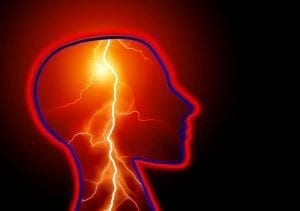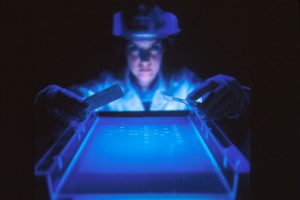CDKL5 Deficiency Disorder
What is CDKL5 deficiency disorder?
CDKL5 deficiency disorder is a condition that is characterized by seizures and severe delays in development. In the past this condition was classified as a form of Rett syndrome, as they share similar symptoms, but they have different genetic causes, leading to CDKL5 deficiency disorder being distinguished as its own condition.
The majority of people with this condition are female, at about 90% of cases. If males do have CDKL5 deficiency disorder, then they experience more severe developmental delays. This condition is extremely rare, with more than 1,000 cases being reported throughout the world.
What are the symptoms of CDKL5 deficiency disorder?
This condition is characterized by seizures that begin in infancy. They can begin as early as one week after birth, but can begin anywhere within the first three months. As people age, these seizures change and follow a predictable pattern. Seizures can occur as often as once a day, and they are resistant to treatment.
Severe developmental delays are the other main symptoms of this condition. People will have intellectual disabilities and often lack the ability to speak. Gross motor skills, such as standing, sitting, and walking, are delayed, and only one-third of those with CDKL5 deficiency disorder can walk independently. Fine motor skills are affected as well.
Other symptoms of this condition include:
- Repetitive hand movements (clapping, hand licking, etc.)
- Teeth grinding
- Disrupted sleep
- Difficulties with feeding
- Gastrointestinal problems (constipation, gastroesophageal reflux)
- Irregular breathing
Those with this condition also have distinctive facial features, such as a high and broad forehead, large and deep-set eyes, a defined space between the upper lip and nose, widely spaced teeth, and a high roof of the mouth. Other possible features include small head size, scoliosis, and tapered fingers.
What causes CDKL5 deficiency disorder?
This disorder is named after the gene that causes it. The CDKL5 gene is responsible for the instructions for a protein needed for normal brain function and development. While medical professionals are not completely sure of this protein or how it causes certain symptoms, they do believe that it is a part of the migration, growth, and formation of nerve cells in the brain. A shortage of the CDKL5 protein alters brain development.
This gene is inherited in an X linked dominant pattern. Because of this pattern, only one X chromosome needs to carry the mutated gene in order for the disorder to be present. Mutations typically appear during the formation of sperm and egg cells or early in embryonic development. This means that CDKL5 deficiency disorder can occur in people with no family history of this condition.
How is CDKL5 deficiency disorder diagnosed?
Symptoms such as seizures early in life, developmental delays, and distinctive facial features often lead doctors to a diagnosis of CDKL5 deficiency disorder. A physical exam, along with an exam of family and medical history is also used. This diagnosis is confirmed with genetic testing.
What are the treatments for CDKL5 deficiency disorder?
There is no cure for this disorder, so treatment is symptomatic and supportive. Physical, occupational, augmentative communication, and speech therapy are all important and should be started early in life. A dietitian can help in creating a diet that brings all of the nutrients necessary, as many people with this disorder have trouble with oral feeding. If one does have scoliosis, braces may be necessary.
Seizures are the most difficult symptom to treat, as they are resistant to medication. Some people have been able to find success with vagal nerve stimulation or dietary modifications, like the ketogenic diet.
Where can I find out more about CDKL5 deficiency disorder?
CDKL5 Deficiency Disorder Articles

UK Approves Ztalmy (Ganaxolone) for CDKL5 Deficiency Disorder



Finding Balance with CDKL5 Deficiency Disorder: Whitney and Havilah’s Story (Pt. 2)

Finding Balance with CDKL5 Deficiency Disorder: Whitney and Havilah’s Story (Pt. 1)







